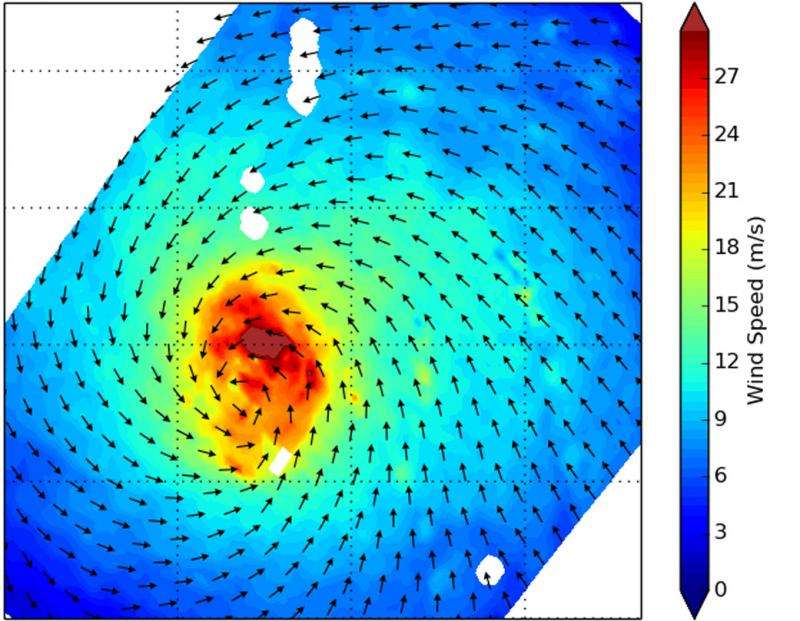NASA's RapidScat identifies Typhoon Halola's strongest side

Typhoon Halola's strongest typhoon-force winds were located on the northern half of the storm, as identified from the RapidScat instrument that flies aboard the International Space Station.
RapidScat gathered surface wind data on the Typhoon Halola on July 21at 2 p.m. GMT (10 a.m. EDT). RapidScat data showed that the strongest sustained winds stretched from northwest to northeast of the center at speeds up to 30 meters per second (108 kph/67 mph). Strong winds wrapped around the center of circulation from northwest to east to the southern quadrant, while the weakest winds were on the storm's western side.
On July 14 at 1500 UTC (11 a.m. EDT), Halola had sustained winds near 75 knots (86 mph/138.9 kph). Halola was located near 24.0 North latitude and 137.1 East longitude, about 554 nautical miles (638 miles/1,027 km) east-southeast of Kadena Air Force Base, Okinawa, Japan. Halola was moving to the north at 9 knots (10.3 mph/16.6 kph).
Halola continues to intensify and the Joint Typhoon Warning Center forecast calls for the storm to peak at 95 knots on July 24. After July 24, Halola is expected to begin weakening as the storm approaches Kyushu.
Provided by NASA's Goddard Space Flight Center




















